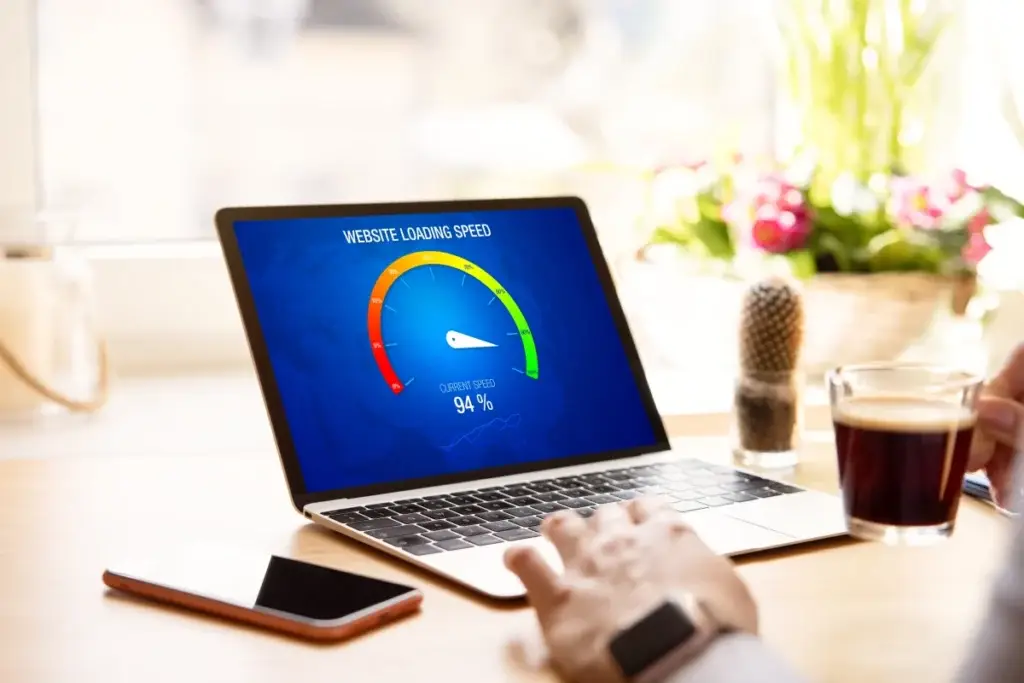- Why Speed Matters for WordPress Websites
- 1. Choose Fast & Reliable Hosting
- 2. Use a Lightweight Theme
- 3. Optimize Images
- 4. Install a Caching Plugin
- 5. Minify & Combine CSS and JavaScript
- 6. Use a Content Delivery Network (CDN)
- 7. Optimize Your Database
- 8. Limit Plugins & External Scripts
- 9. Keep WordPress Updated
- 10. Test with Speed Tools
- Bonus Tips for Extra Speed

A slow WordPress website doesn’t just frustrate visitors—it also hurts your SEO rankings and reduces conversions. With Google’s Core Web Vitals update, speed optimization has become more important than ever. The good news? WordPress offers plenty of ways to boost your site speed without needing advanced technical skills.In this guide, we’ll explore why speed optimization matters and how to make your WordPress site load lightning fast.
Why Speed Matters for WordPress Websites
Better SEO Rankings – Google uses site speed as a ranking factor.Lower Bounce Rates – Users leave if your site takes more than 3 seconds to load.Higher Conversions – Faster websites lead to more sales, sign-ups, and engagement.In short: Speed = SEO + User Experience + Conversions
1. Choose Fast & Reliable Hosting
Your hosting provider is the foundation of your site’s performance.Go for managed WordPress hosting like SiteGround, Kinsta, or WP Engine.Avoid cheap shared hosting if you expect higher traffic.
2. Use a Lightweight Theme
Themes with heavy designs slow down your site.Recommended: Hello Elementor, GeneratePress, or Astra.These themes are minimal and optimized for speed.
3. Optimize Images
Large images are the #1 reason WordPress sites load slowly.Use plugins like Smush, Imagify, or ShortPixel.Convert images to WebP format.Enable lazy loading so images load only when visible.
4. Install a Caching Plugin
Caching reduces server load and speeds up delivery.Best plugins: WP Rocket (premium), W3 Total Cache, LiteSpeed Cache (for LiteSpeed servers).These plugins also help with minifying CSS/JS and enabling GZIP compression.
5. Minify & Combine CSS and JavaScript
Unoptimized CSS/JS files can add seconds to load time.Plugins like Autoptimize or Asset CleanUp help reduce file size.Load only the scripts you actually need.
6. Use a Content Delivery Network (CDN)
A CDN stores your site on multiple global servers. Visitors load content from the nearest server, which boosts speed.Popular options: Cloudflare, BunnyCDN, KeyCDN.
7. Optimize Your Database
WordPress databases can get cluttered with revisions, drafts, and spam.Use WP-Optimize or Advanced Database Cleaner to keep it lean.
8. Limit Plugins & External Scripts
Only install essential plugins.Remove unused plugins and themes.Minimize external scripts like ad trackers and unnecessary widgets.
9. Keep WordPress Updated
Always update:WordPress coreThemesPluginsUpdates often include performance and security improvements.
10. Test with Speed Tools
Measure improvements with:Google PageSpeed InsightsGTmetrixPingdom ToolsFocus on Core Web Vitals (LCP, FID, CLS) for long-term SEO success.
Bonus Tips for Extra Speed
Enable HTTP/2 or HTTP/3 (check with your host).Use server-level caching if available.Disable WordPress emoji and embed scripts with a small code snippet or plugin.Offload videos to platforms like YouTube or Vimeo instead of hosting them directly.
